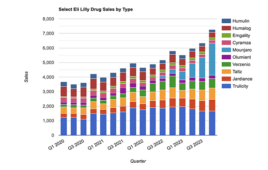 David Hui, PhD, and Susanna Hofmann, are researchers in the department of pathology and laboratory medicine. (Source: University of Cincinnati) |
University of Cincinnati (UC) pathologists have identified a molecular target that may help scientists develop drugs to reduce fat transport to adipocytes (fat cells) in the body and prevent obesity and related disorders. Detailed in the Journal of Clinical Investigation, the findings about a cell receptor, known as the adipocyte LDL receptor-related protein 1 (LRP1), provide clues about the biological mechanisms that control fat transport in the body.
Using genetically-altered mice, David Hui, PhD, and his team demonstrated that “knocking out” the LRP1 in fat cells has a direct impact on how many lipids (fats and fat-like substances) are transferred and deposited to different tissues. Hui says the experimental mice gained less weight, stored less fat, tolerated glucose better, and expended more energy (due to increased muscle activity) when compared with a control group. “This receptor is expressed in numerous tissues throughout the body—including the heart, muscles, liver, and vascular wall—but its specific functions in the different tissues are still relatively unknown,” says Hui, corresponding author of the study and professor of pathology and laboratory medicine at UC.
This article was published in Drug Discovery & Development magazine: Vol. 10, No. 11, November, 2007, pp. 34.
Filed Under: Drug Discovery




